TO MARK its 20th anniversary, the Château de Prangins has opened a major exhibit on the printed cotton material know as chintz. Originating in India, the 17th-century European craze for this fabric and its floral motifs dominated the global economy, society and fashion for 200 years.
Celebrating its two decades of existence, the Swiss National Museum at the Château de Prangins has chosen a beauty of a topic, not only for the attractiveness of its main subject but because of its significance for Switzerland, a primary participant and beneficiary of the printed cotton trade that fluorished in the 17th and 18th centuries in Europe and latterly in America.
Out with the old, in with the new
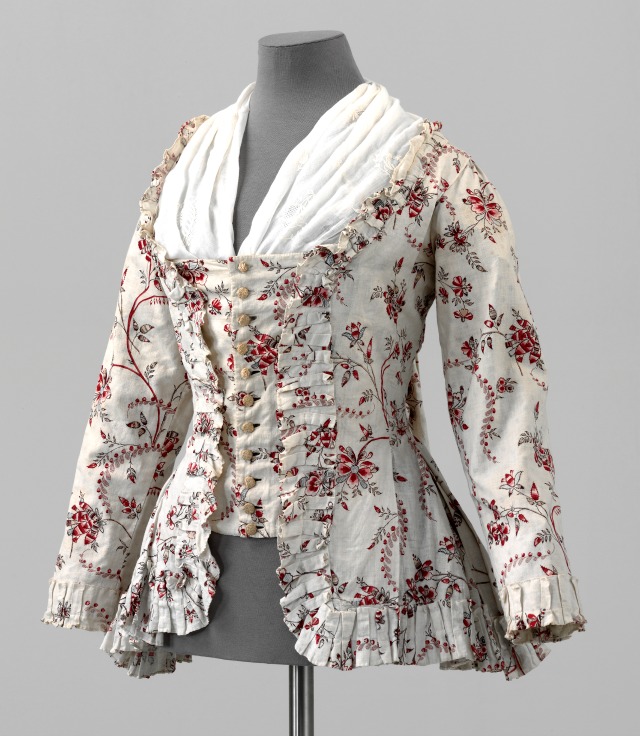
Spacious displays on two floors of the Château look at every facet of the chintz trade beginning with some stunning examples acquired by the museum from a private collector in 2016 and featuring clothes, furnishings and wall hangings handmade in India and exported to Europe to an instantly appreciative public.
I can well understand why the continent was more than ready to chuck its heavy and hard-to-maintain wool, linen and hemp garments (for the working class) and delicate, non-colorfast silk and velvet ones (for the aristocracy) for the light, easy-care, non-fadeable cotton that was pleasurable to wear and so diversified in color and pattern — how do you top comfort combined with the ultimate eye candy?
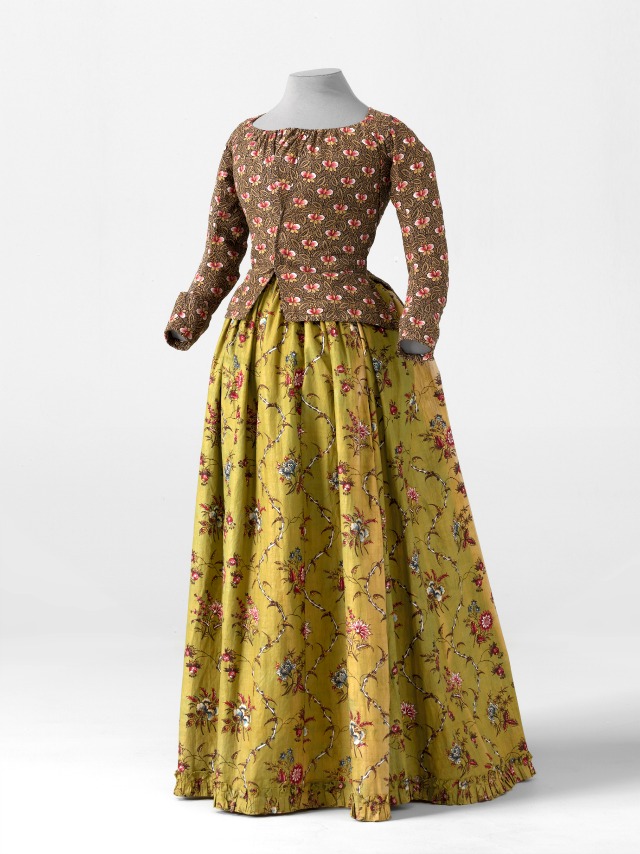
This is my favorite part of the exhibit, with the colors and vibrant motifs looking as fresh today as they must have when first printed. European manufacturers scrambled to compete (initially with poor results) and the exhibit displays the tools (woodblocks, hammers, etc) and dyeing components (indigo, madder, metallic salts, etc), salesmen’s swatches, historical documents and personal testimonies that show how chintz manufacture dominated the French marketplace.
A threat to traditional French manufacturers
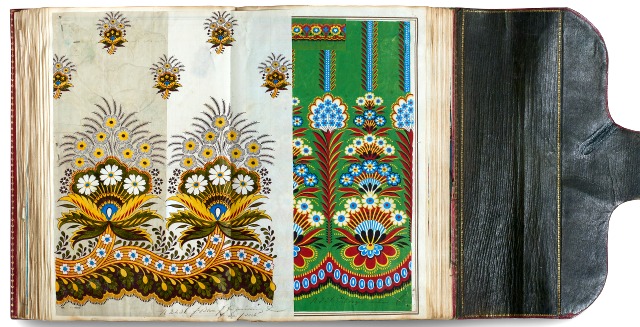
In fact, the fabric became so popular in France, traditionally the centre of wool and linen manufacturing, the government eventually banned its production and went so far as to forbid its citizens from wearing the fabric, a law that people at all levels of society flagrantly disobeyed.
Ever clever and industrious, Swiss manufacturers stepped in, opening factories in Basel, Neuchatel and Geneva. They then exported their expertise when eventually the French government capitulated on the inevitable and manufacturing fluorished once again in Rouen, Nantes, Mulhouse, Orange, and most impressively in Jouy, where the famous and revered toile de Jouy originated.
Keeping buyers amused
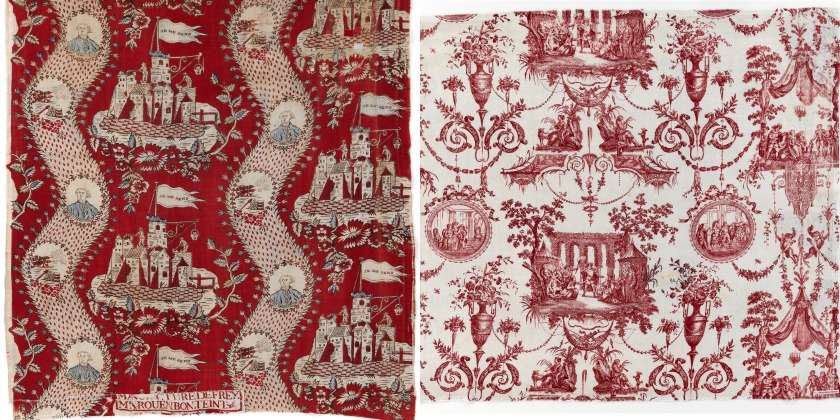
To attract buyers with a taste for the latest, French manufacturers chose topical political and scientific events to adorn home furnishings including curtains, wall hangings and even bed spreads and canopies (I wonder if sleeping under scenes of a naval battle provoked nightmares?).
Eventually these here-today, gone-tomorrow themes were abandoned for others — music and literature — offering greater longevity (and no doubt serenity), such as The Marriage of Figaro and the first balloon flights.
The ugly underbelly of the cotton trade
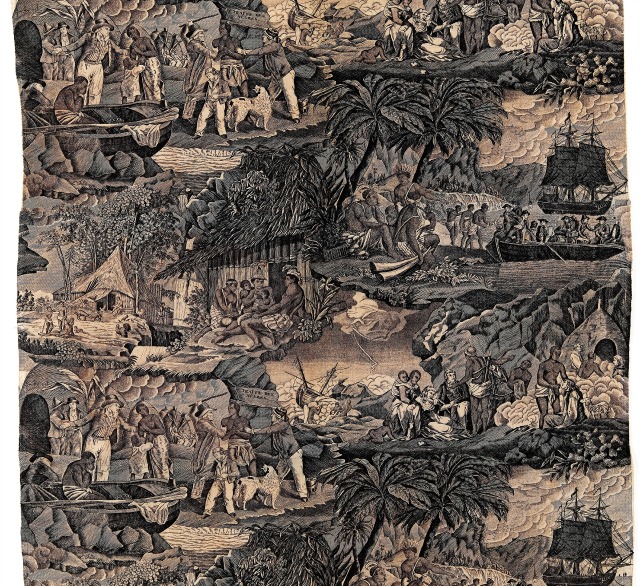
The exhibition doesn’t shirk, however, from showing the dark underbelly of the chintz trade: how inextricably it was reliant upon slave trading for its existence and profitability.
An integral part of the “triangular trade”, chintz manufactured in India or printed in Europe was the principal merchandise exchanged for slaves on the African coast. The slaves were then used to buy tropical goods — coffee, sugar and later cotton in the American colonies, where they also laboured on plantations to produce these goods.
Then (and still today) human suffering was behind the western world’s rapacious desire for the latest and often swiftly discarded fashions.
Events for the entire family
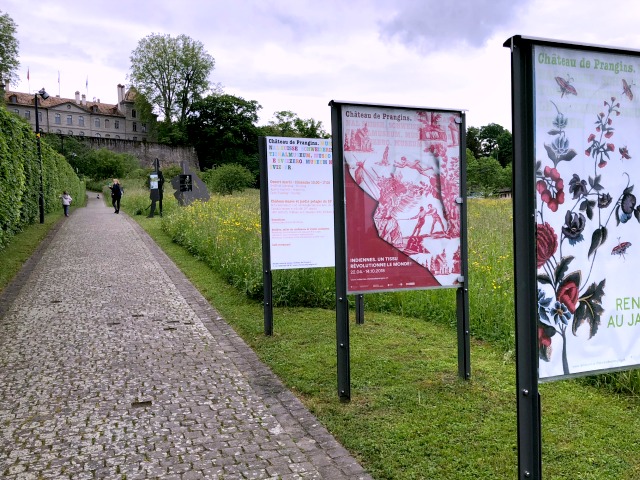
Throughout the duration of the exhibition, which continues until the 14th of October, the Museum offers an impressive variety of events (in French) for adults and families including free guided visits, lectures on a variety of chintz-related themes and workshops on printing techniques (some require a fee).
In choosing this theme, the museum has come up with a showstopper, both visually and for its historical significance — I don’t think it could have dreamed up a more engaging one to celebrate its 20th birthday. ♣
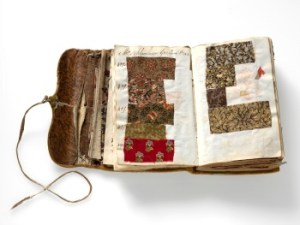
Chintz: How a fabric changed the world!
22 April to 14 October 2018
Château de Prangins
Avenue Général Guiguer 3
CH-1197 Prangins
Tel: +41.22.994.88.90
info.prangins@museenational.ch
Main photo caption: Flowers and birds, Jouy, Oberkampf factory, 1778 to 1797, woodblock print. ©Swiss National Museum.


10 responses to ““Chintz: A Fabric that revolutionised the World” at the Château de Prangins”
The V&A must be jealous! And here there’s no line-ups and you don’t need to book in advance…
LikeLiked by 1 person
That’s right, you can walk right in and yes, the V&A would love to have this collection of chintz I think!
LikeLike
How beautiful and lively!
LikeLiked by 1 person
You’d love the exhibit, Virginia, and then we’d have lunch or coffee on the terrace afterwards.
LikeLike
Great article! Thanks for sharing all this helpful info. I hope to go there soon! 🙂
LikeLike
Happy that you find it helpful, Heddi. It’s a lovely museum in beautiful grounds and you have to check out the huge garden they have there as well. In fact, you can’t miss it! The permanent exhibition rooms, called “Noblesse Oblige”, are a real pleasure, too, and entry to them is free.
LikeLiked by 1 person
I would love to see this exhibition! I’m fascinated by the chintz pattern that documents the slave trade. It’s hard to imagine that it would have been a big seller…
I see that this runs until October, so who knows who might show up at your yellow door before then!
xo
Pam
LikeLike
Pam, the chintz depicting the slave trade was commissioned by abolitionists. If I recall correctly, the scenes show Africans being betrayed by their fellow Africans and beaten by whites and juxtaposes that against a scene of Africans helping the white victims of a boat wreck (which is historical fact). So it wasn’t for widespread sale, I assume, but to impress upon viewers (the public? politicians?) the horrible hypocrisy and the abuse that had to be abolished.
LikeLiked by 1 person
Hi Elena,
Your write up makes me eager to get to Prangins! The history of chintz and these examples here in Switzerland will be a fun day out! Thanks!
LikeLike
Hi Leigh Ann, I’m so pleased that you enjoyed the article and that you find it helpful. Let me know what you think of the exhibit! Have a good time, Elena
LikeLike